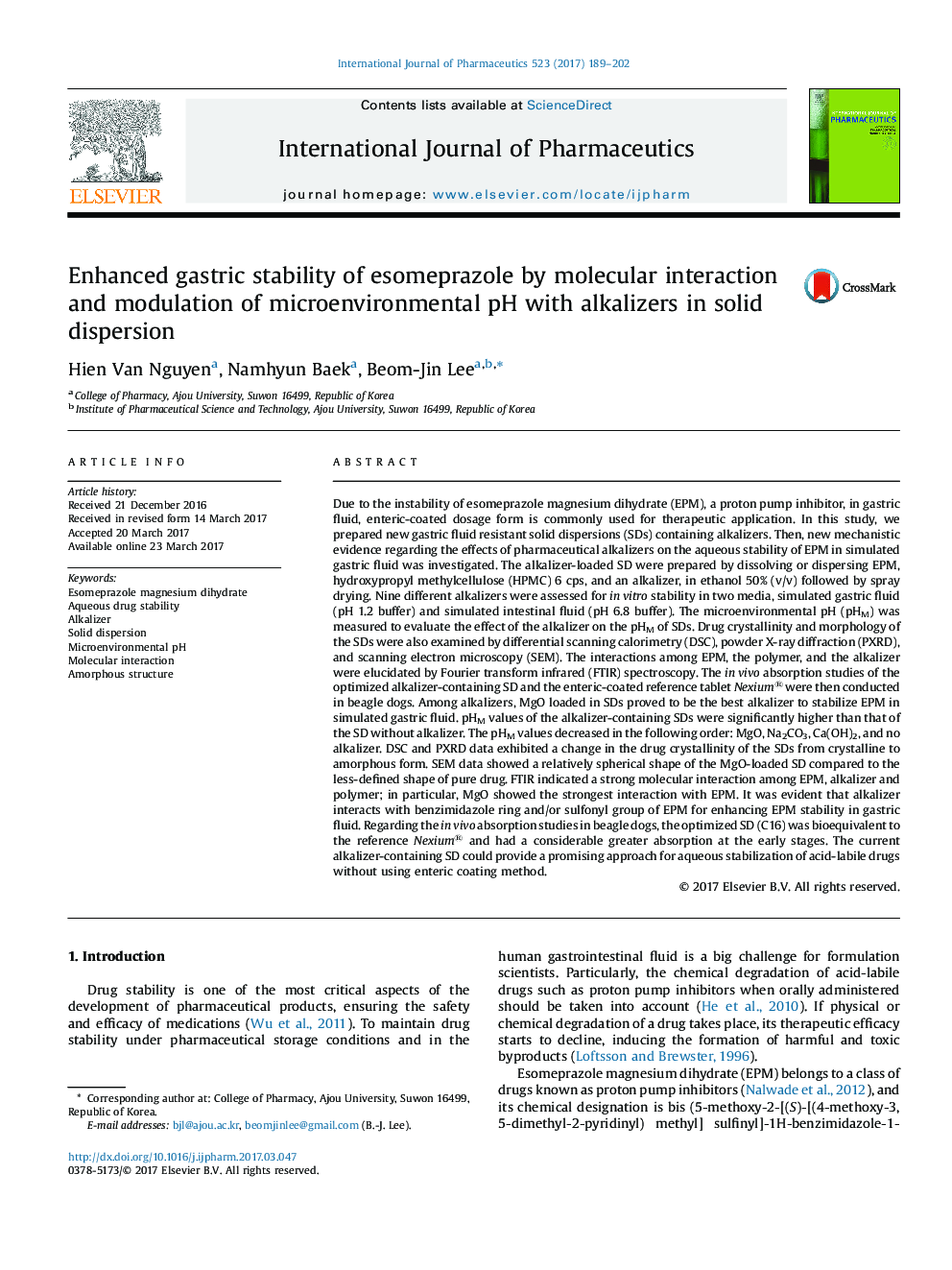| Article ID | Journal | Published Year | Pages | File Type |
|---|---|---|---|---|
| 5550517 | International Journal of Pharmaceutics | 2017 | 14 Pages |
â¢Solid dispersion containing alkalizers enhanced aqueous stability of esomeprazole in gastric fluids.â¢The synergistic stabilization effect was obtained in the spray-dried ternary solid dispersion.â¢Microenvironmental pH of alkalizer-containing solid dispersions were significantly higher than that of solid dispersion without alkalizer.â¢FT-IR spectra showed a strong molecular interaction of divalent metal-containing alkalizer and esomeprazole.â¢Alkalizer interacts with benzimidazole ring and/or sulfonyl group of esomeprazole.
Due to the instability of esomeprazole magnesium dihydrate (EPM), a proton pump inhibitor, in gastric fluid, enteric-coated dosage form is commonly used for therapeutic application. In this study, we prepared new gastric fluid resistant solid dispersions (SDs) containing alkalizers. Then, new mechanistic evidence regarding the effects of pharmaceutical alkalizers on the aqueous stability of EPM in simulated gastric fluid was investigated. The alkalizer-loaded SD were prepared by dissolving or dispersing EPM, hydroxypropyl methylcellulose (HPMC) 6 cps, and an alkalizer, in ethanol 50% (v/v) followed by spray drying. Nine different alkalizers were assessed for in vitro stability in two media, simulated gastric fluid (pH 1.2 buffer) and simulated intestinal fluid (pH 6.8 buffer). The microenvironmental pH (pHM) was measured to evaluate the effect of the alkalizer on the pHM of SDs. Drug crystallinity and morphology of the SDs were also examined by differential scanning calorimetry (DSC), powder X-ray diffraction (PXRD), and scanning electron microscopy (SEM). The interactions among EPM, the polymer, and the alkalizer were elucidated by Fourier transform infrared (FTIR) spectroscopy. The in vivo absorption studies of the optimized alkalizer-containing SD and the enteric-coated reference tablet Nexium® were then conducted in beagle dogs. Among alkalizers, MgO loaded in SDs proved to be the best alkalizer to stabilize EPM in simulated gastric fluid. pHM values of the alkalizer-containing SDs were significantly higher than that of the SD without alkalizer. The pHM values decreased in the following order: MgO, Na2CO3, Ca(OH)2, and no alkalizer. DSC and PXRD data exhibited a change in the drug crystallinity of the SDs from crystalline to amorphous form. SEM data showed a relatively spherical shape of the MgO-loaded SD compared to the less-defined shape of pure drug. FTIR indicated a strong molecular interaction among EPM, alkalizer and polymer; in particular, MgO showed the strongest interaction with EPM. It was evident that alkalizer interacts with benzimidazole ring and/or sulfonyl group of EPM for enhancing EPM stability in gastric fluid. Regarding the in vivo absorption studies in beagle dogs, the optimized SD (C16) was bioequivalent to the reference Nexium® and had a considerable greater absorption at the early stages. The current alkalizer-containing SD could provide a promising approach for aqueous stabilization of acid-labile drugs without using enteric coating method.
Graphical abstractDownload high-res image (149KB)Download full-size image
